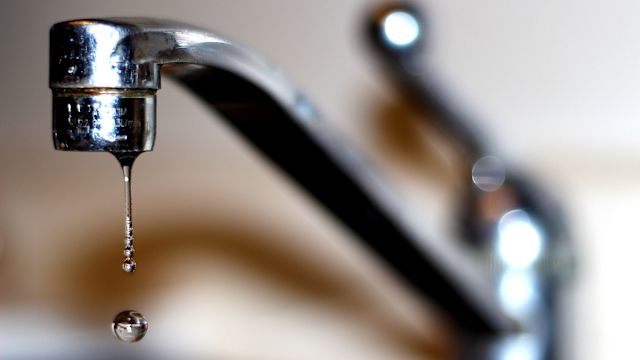At times, your bladder may not to do what it’s supposed to do (hold onto urine until you’re ready to relieve yourself), leading to anxiety-ridden accidents and embarrassing leakages. The formal diagnosis for this is urinary incontinence. And while it may feel like you’re the only one suffering from this bladder curse, in reality you’re not alone. Urinary incontinence, or involuntary urination, affects about 25 million people in the U.S. Of that number, a whopping 75 to 80 percent are women.
Because of urinary incontinence’s embarrassing nature, you may curtail activities you would normally enjoy doing—whether it’s socializing or working out—for fear of an accident. Fortunately, there are remedies. Discover what’s keeping you from getting to the toilet on time—and learn what you can do to find relief.
1. The problem: You pee when you run
Involuntary or uncontrollable leakage of urine, formally known as stress urinary incontinence, is the most common form of incontinence in women, affecting one in four women ages 25 through 44 and one in three women ages 45 through 64. Unfortunately, leakage isn’t restricted to exercise-activities. Stress incontinence can strike when the slightest amount of pressure is applied to the abdomen. You can spring a leak when you sneeze, cough, laugh—even when you have sexual intercourse.
What’s Behind It: The pelvic muscles that control your urine flow are weakened. This may be caused by childbirth, injury to the urethra, some medications and (for men) pelvic or prostate surgery.
Find Relief:
Experts recommend that you try these lifestyle changes:
- Drink less fluid (if you drink more than average amounts).
- Add more fiber to your diet to avoid constipation (which can worsen incontinence).
- Avoid bladder irritants such as citrus, spicy foods and caffeinated and carbonated drinks.
- Don’t hold it in. Go when you first feel the urge; it could help lessen leaks.
If you need to shed a few pounds, this may give you added incentive: Less weight means less pressure on your bladder and pelvic floor. Kegel exercises can strengthen the muscles around your urethra. Your doctor may prescribe a medication if you have mild to moderate incontinence. But if lifestyle changes and medication don’t work, your doctor may recommend surgery.
Damage Control: For women, wear a panty liner or sanitary napkin, depending on how much you tend to leak.
2. The problem: You dribble constantly—sometimes without noticing
This unpleasant occurrence may be caused by overflow incontinence. Try as you might to empty your bladder, you just can’t go. In some instances, you manage to pee, but the flow is weak and slow. Because your bladder didn’t fully empty you might even dribble right after going to the bathroom—talk about frustration! Surprisingly, overflow incontinence occurs most often in men.
What’s Behind It: In some cases there may be an obstruction that makes it difficult for you to empty your bladder, so the overflow leaks out. Even worse, you may not get the message that it’s time to head to the head. For men, an enlarged prostate may be causing the blockage. For men and women both the cause may be a kidney stone, constipation or a narrowing of the urethra that blocks or slows the flow. Another possible cause may be nerve or muscle damage that keeps the bladder muscles from squeezing enough to empty the bladder.
Find Relief: Catheterization is the go-to treatment for overflow incontinence. Both men and women can use a catheter, a thin tube that helps drain urine, to help emptythe bladder. There are different types of catheters, so speak to your doctor to see which may be right for you. Another tactic that may help includes keeping a bladder diary that you can share with your doctor. This can help your doctor pinpoint the causes behind the bad bladder behavior. Prescription medications may help, but in some cases surgery may be required to remove an obstruction or repair other causes of overflow incontinence.
Damage Control: Be prepared in social situations. Consider wearing absorbent pads or take extra clothing when you’re out.
3. The problem: You have a sudden urge to go—right now
Are you constantly hit with a sudden, out-of-nowhere need to pee but can’t make it to the bathroom in time? You may suffer from urge incontinence. We’ve all had those moments when we’ve waited too long to go—sometimes with unfortunate results. But with urge incontinence you may feel the need to go to the bathroom constantly, upwards of eight to nine times a day, and even two to three times at night. The sound of running water doesn’t help things and bladder pain or discomfort may exist as well.
What’s Behind It: You get the urge, but before you can make a move to the nearest bathroom the bladder muscles spasm or contract, causing urine to flow. Some causes of urge incontinence include bladder inflammation or infection, brain or nerve problems, bladder cancer, or an enlarged prostate (for men). But in most cases, it’s unclear why the condition develops.
Find Relief: Bladder retraining is usually the first step to controlling an overactive bladder. The goal is to train your bladder to hold more urine and stay relaxed so you can make it to the restroom accident-free. In addition to bladder retraining, your doctor may recommend lifestyle changes such as drinking less than 8 ounces of liquid at a time; avoiding carbonated drinks; and cutting out foods that could irritate your bladder, such as spicy foods, citrus fruits and other highly acidic foods. Kegel exercises and medication may help. More unusual relief methods may include electrical stimulation to contract bladder muscles; vaginal cones to strengthen pelvic floor muscles; and biofeedback to control pelvic muscles. A small 2005 study found that acupuncture might help relieve symptoms too.
Damage control: For women, wear panty liners; men and women can focus on lifestyle changes to help control leakage.
Medically reviewed in September 2020.





